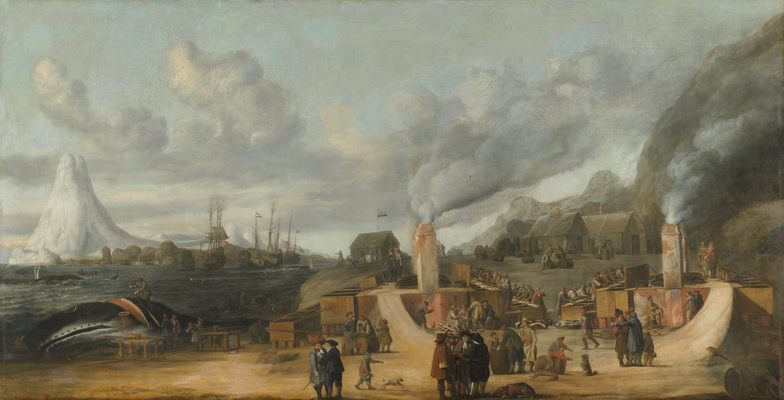About
During the 17th century, the settlement of Smeerenburg on the Svalbard archipelago in present-day Norway was a thriving whaling outpost. Dutch and Danish whalers sailed these icy northern waters in search of blubber, which they would render in the Smeerenburg ovens.
In the early 1600s, Dutch and Danish whalers came to the waters around the Svalbard archipelago, whose most profitable whaling grounds centered on the island of Spitsbergen. In 1619, the whalers founded the settlement of Smeerenburg—literally meaning “Blubber Town” —on Amsterdam Island in northwest Svalbard. The settlement was built to serve as the main outpost in the north of the archipelago, and it soon began to grow.
Tales of the “booming” Smeerenburg were highly exaggerated and romanticized over the years, with claims of hundreds of ships and as many as 18,000 men visiting the settlement during the short summer seasons. It was a town with stalls and streets, churches and fortifications, gambling dens and brothels—or so the stories claimed.
In reality, as later archaeological evidence showed, Smeerenburg was likely visited by perhaps 400 men and 15 ships during its peak seasons, and had around 19 buildings during its heyday in the 1630s. Still, it was an important outpost for processing the valuable blubber, which at the time required a local land-based operation.
The blubber was rendered in vast copper vats placed on top of blubber ovens, whose circular foundations were made from bricks and “blubber cement.” This cement was made using a mixture of whale oil, sand, and gravel, which formed a solid base not unlike asphalt.
Smeerenburg was a short-lived settlement. It was already in decline by the mid-1640s, as whale numbers dropped drastically and the processing of blubber into oil was more frequently done on return to port. The outpost was eventually abandoned around 1660 and was stripped of any useful materials.
Today, the most obvious remains of Smeerenburg are the large circles of blackened rubble that once served as the foundations of the blubber ovens. The blubber cement has crumbled over the years, but the circular formations are still clear to see, marking the cooking areas where the ovens once stood. Old pieces of timber are also strewn along the beach near the ovens, as well as the bones of whales once brought ashore for processing.
Related Tags
Know Before You Go
The ruins of the Smeerenburg blubber ovens are located on Amsterdam Island in northwest Svalbard in the Arctic Ocean, about midway between continental Norway and the North Pole. There are several landing sites used on trips to see the ovens, often depending on the direction of the wind. A number of tour operators go to Smeerenburg via Spitsbergen (the largest and only permanently populated island in the archipelago). The ovens and other artifacts are strictly protected, so make sure you follow the rules when visiting.
Published
July 25, 2019
Sources
- http://cruise-handbook.npolar.no/en/nordvesthjornet/smeerenburg.html
- https://www.spitsbergen-svalbard.com/spitsbergen-information/islands-svalbard-co/spitsbergen-northern-part/amsterdamoeya-smeerenburg.html
- https://publicdomainreview.org/2019/07/10/the-myth-of-blubber-town-an-arctic-metropolis/
- https://oceanwide-expeditions.com/to-do/experiences/17th-century-blubber-ovens
- http://www.bbc.co.uk/oceans/locations/arctic/smeerenburg.shtml


























